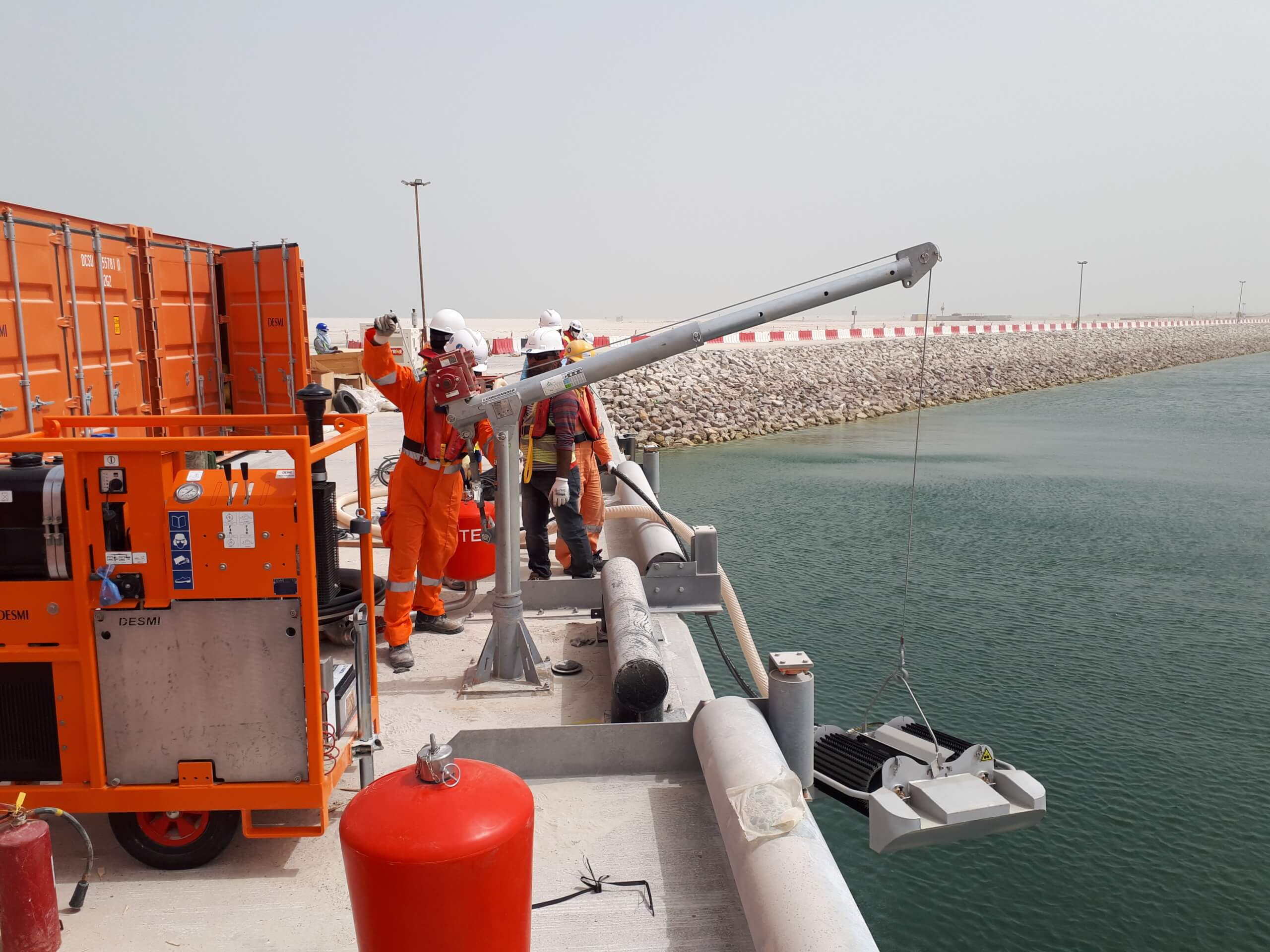Understanding Davit Crane Configurations
In general, both portable and stationary davits are made up of a base, vertical mast, boom arm, and a winch or some other type of hoisting apparatus. They are generally lightweight, but durable, and offer unique application flexibility. The difference between portable and stationary davits is in the name: one is fixed in a stationary position and the other is easier to move between locations.
When choosing the right type of davit crane for your needs, keep in mind all the jobs you want it to do, the environments and elements it will face, and the variety of options available for both types of davit cranes.
What Is a Portable Davit Crane?
Portable davits offer the most functional flexibility — and yes, portability — of any crane. They are made of lightweight materials, such as aluminum, stainless steel, or carbon steel, that are strong enough to lift and lower loads but light enough to be easy to maneuver and move from position to position. They can also be used with multiple bases, so you can have bases stationed in various places that can be utilized by a single crane.
Portable davits are often used in situations where there are changing working and environmental conditions, or in industries where the crane might be required to adapt to doing different tasks. Some of the common use cases include:
- Marine maintenance
- Wastewater treatment plants (alongside stationary cranes)
- Remote jobsites
- Rooftop systems
If a portable davit crane seems like the right fit for your needs, check out the best lineup of portable davits in the industry.
What Is a Stationary Davit Crane?
While portable davits can technically be used as stationary cranes, purpose-built stationary davits are often used for the more heavy-duty lifting and positioning jobs. Thern’s stationary cranes have a fixed base and are made of carbon steel. As a permanent fixture, stationary davits are well suited to a wide range of applications, such as:
- Industrial facilities
- Marine maintenance (including for use on tug boats)
- Rooftop systems
- Wastewater treatment plants
Thern’s cranes are built to stand up to the toughest tasks, day after day. See our options to find a stationary davit that fits your needs.
Key Differences of Portable vs. Fixed Davit Cranes
Portability and Mobility
The obvious difference between portable and stationary davits is in the name. Portable davits are much easier to break down and move between bases and locations than stationary davits. Stationary davits do not have base options and cannot be broken down, while portable models are lighter and can be set up, torn down, and relocated across jobsites as needed.
Mounting Systems and Base Types
Portable davits can have various quick-mount bases that they can utilize and switch between. Stationary davit cranes are attached to permanent bases that are in a fixed position.
Load Capacities
Stationary davit cranes are rated for lifting and lowering heavier loads, thanks to being made from stronger materials and having a permanent anchored base. Portable davits, with their lightweight construction and less robust bases, are generally rated for lower loads. At the high end, Thern heavy-duty stationary davits can handle loads of up to 5,500 lbs., while the heaviest lifting portable options can lift 2,000 lbs.
Choosing the Best Davit Crane for Your Application
When choosing the perfect davit for your situation, consider all the variables that will be at play. Yes, it’s important that the crane can handle the weight and frequency of loads you are asking it to lift, but that’s not the only thing you should think about. For example, what kind of environment will your crane be in? Operating indoors is dramatically different than needing to do work outside in the elements, and different still than being consistently subjected to corrosive conditions, such as salt water spray. Choosing a finish and crane that are designed to handle the jobsite will go a long way in protecting your equipment and investment.
You should also think about your budget, the skill of your workforce, and the timeline you want to hit for your projects. A single portable davit can be extremely cost-effective with multiple bases around the jobsite, but having only a single crane can slow projects, and the folks on the ground doing the work will need to be well-versed in setting up and breaking down the crane to move it from location to location. On the other hand, several stationary davits could help get work done lightning fast, but purchasing multiple cranes can take up a big chunk of your budget.
Making the Right Davit Crane Choice
Whether you’re looking for lightweight and mobile or heavy-duty and permanent, Thern has a davit crane for you. Before you choose, assess which type of crane will be best suited for the work you need doing — if you have any questions about your choices or want some expert insights, get in touch with our experts. We can also talk you through customization options that can tailor your davit to exactly match what your application calls for.
Ready to start working better? Check out our portable and stationary davit cranes today.
